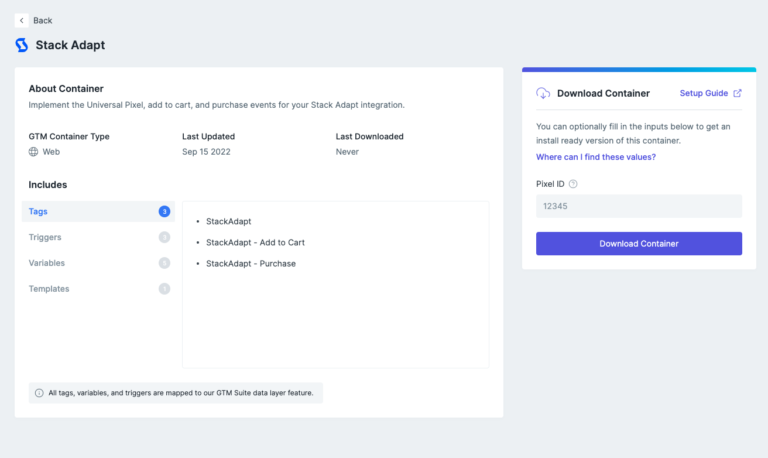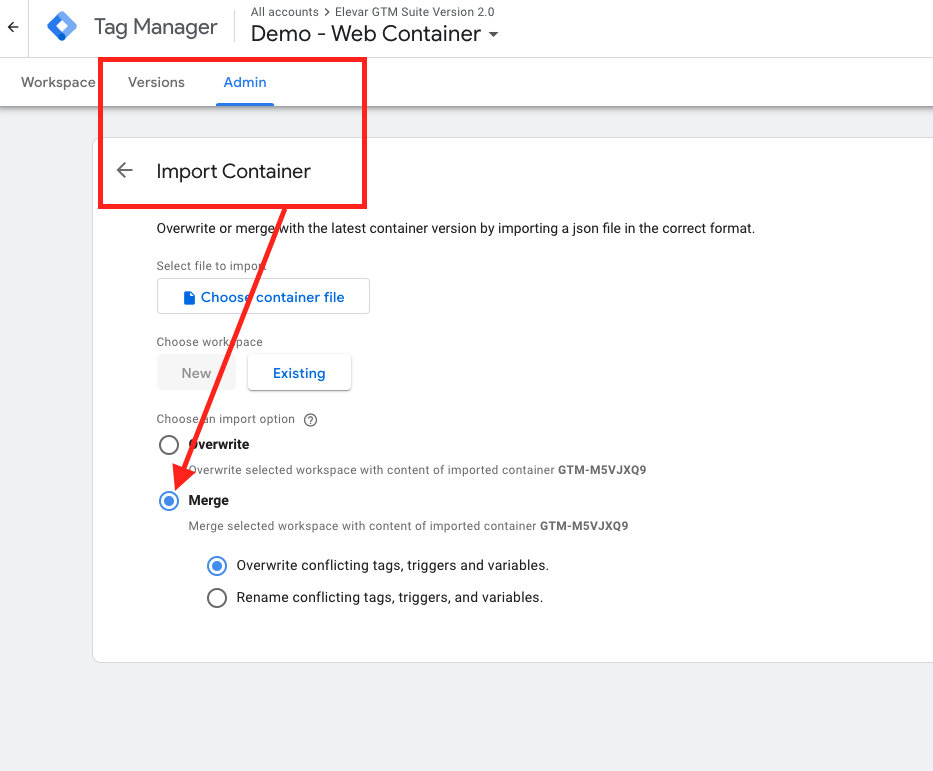StackAdapt
How to Implement StackAdapt Pixel/Web Tracking via Google Tag Manager
Steps to Implement
Step 1: Overview
Without a single line of code and done in minutes, Elevar helps you implement your StackAdapt Conversion Tracking Tag for Shopify stores through Google Tag Manager using the most up-to-date requirements from each platform.
Plus – these templates come with built-in monitoring so you’re the first to know when a tag breaks and risks impacting your campaigns.
This integration supports the standard conversion tracking available with your StackAdapt programmatic advertising account.
StackAdapt offers advertising solutions such as native, video, connected TV and audio ads. Learn more about StackAdapt here.](
Step 2: Install Data Layer & Shopify Source to Your Store
Install Elevar's Data Layer & Shopify Source on your store. Follow our guide on How to Implement the Shopify Source.
Step 3: Download Container for GTM
Inside of your Elevar account, go to Pre Built Tags > StackAdapt.
Update your StackAdapt pixel ID in the tag settings shown below. Your Pixel ID is provided in your implementation instructions from your Stack Adapt guide.

Download the container and save to your computer.
Step 4: Import Container to GTM
Next up, go to your Google Tag Manager container > Admin > Import.

Be sure to select Merge container, not overwrite.
Once you’ve imported, verify your Merchant ID variable is accurate.
Step 5: QA & Publish
Once you’re ready to go live then put GTM into preview mode.
You can navigate the site and place an order to verify your StackAdapt tags trigger as expected.
Remember that the data layer from step 2 needs to be live on your store in order for the variables – like StackAdapt click id and order id – to populate.
Updated 5 months ago
